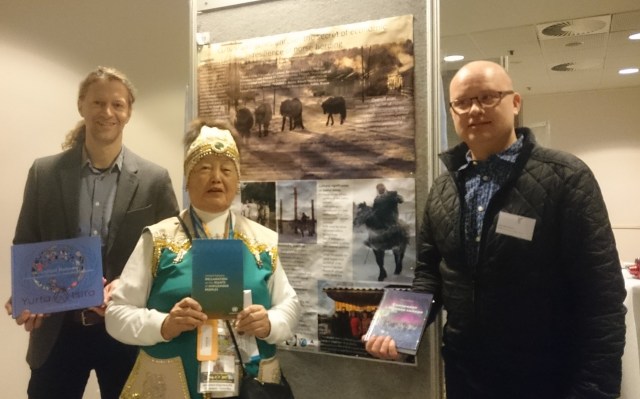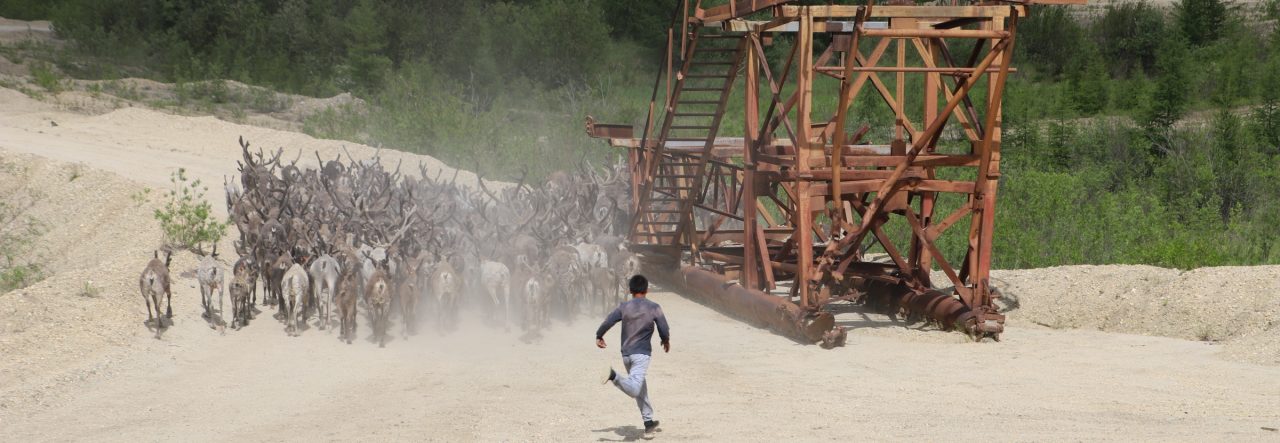The Arctic Ark team has presented their work of the last four years in human-animal relations in the Arctic at the Finnish Academy’s final Arktiko Seminar. Studying people’s relations to their domestic pastoral animals in the Arctic using approaches from anthropology and genetics has resulted in some surprising results:
Our work with reindeer, horse and cattle herders in Lapland, Arkhangelsk region and Yakutia has shown that
- people in the Arctic have long relied and still rely on more animal diversity than reindeer and fish
- a very similar set of properties of their pastoral animals is valued by the herders across regions and also across species: the independence, the autonomy of the animals, and the very low level of human care that the animals need in comparison to other more southerly animals are particularly valued. This also comes with the plus that all these animals can wander off and search for their own food, grazing

ArcArk coordinators Juha Kantanen (genetics) and Florian Stammler together with Alexandra Grigorieva (Yurta Mira) in front of the ArcArk poster on the viability of horse-herding on sometimes very limited pasture resources. Imported breeds of pastoral animals, like Holstein cattle or Arabian horses would not be able to survive on such resources. And particularly, their would not be able to graze on pastures covered under snow. This is what Sakha horses can, which you do not need to feed at temperatures down to minus 60.
- that in different regions the same species of animals is used in a very diverse way, and this use is culturally determined. We find that the broader the use value of the animal is in the specific society, the more resilient the animal husbandry is to different socio-economic shocks on the human-animal livelihood. A good example for this is the horse: in Yakutia people value the horse as a source of meat, of transport, racing, prestige, milk, hair and spiritual connection to the land. This combination of broad use-application of the horse has led to a steady grow of horse numbers and steady demand for horse products on the market, making this an even economically viably livelihood. On the other hand, in Finland and in Mezen (Arkhangelsk), local horse breeds have lost their economic value almost entirely, since motorised transport replaced them in agriculture and forestry. In these cases, where people do not eat horse meat, the only use – value left for the horses is as a source for tourism and racing.
The work of our colleagues from genetics, Juha Kantanen and his team, has shown that there is indeed something very specific to the Arctic animal breeds in comparison to other animals of the same breeds that are from the south. For example, Juha showed how the Sakha cattle, Kholmogor cattle and Lapland cattle are genetically more similar to each other than to the world’s most dominant milking cattle breed, the Holstein. Only 5% of the genes that they found expressed in their mRNA analysis were common with the Holstein.
All in all, livelihoods in the Arctic basing on the use of local animals are more self-reliant, meaning they need less input from the south to support the system. Using the resources of Arctic animal breeds makes sense because they cost less, are less vulnerable to shocks, more resilient against natural and socio-economic changes, in comparison to importing high-output narrow specialised animal breeds. And they still produce enough output to support humans in an extreme climate.
Publications about this are in preparation by Juha Kantanen and team, Stephan Dudeck, Anna Stammler-Gossmann, Nuccio Mazzullo, Florian Stammler, also together with our local colleagues Aytalina Ivanova, Ruslan Popov, Innokenti Ammossov. We shall announce them here when they are published
